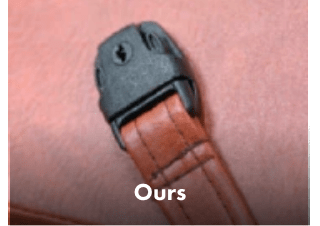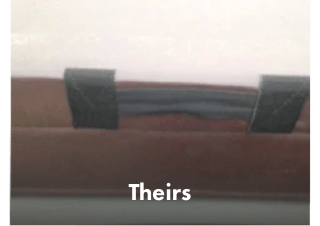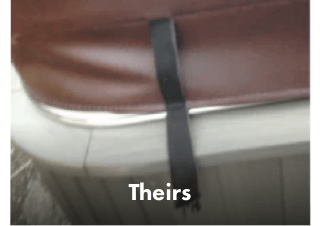How Can You Prevent Your Hot Tub from Freezing?
Hot tubs are a perfect way to relax and unwind, especially during colder months. However, the freezing temperatures can pose a significant risk to your hot tub if not properly maintained. Water freezing in the pipes, pumps, or jets can lead to expensive repairs and even complete system failure. To avoid these issues and keep your hot tub in top condition all year round, here are some effective ways to prevent your hot tub from freezing.
1. Keep the Water Temperature Consistent
The most straightforward way to prevent freezing is by maintaining the water temperature at a minimum of 38°F (3°C). While most hot tubs are designed to operate year-round, setting your hot tub temperature to at least 100°F (38°C) during the winter months will ensure the water stays warm enough to avoid freezing. Even when the hot tub isn’t in use, keeping it at a low, consistent temperature can make all the difference.
2. Use a Hot Tub Cover
A good, well-fitting hot tub cover helps retain heat, keeping the water temperature more stable. It also acts as a barrier against debris, snow, and ice, which could cause damage or interfere with your hot tub's components. Ensure the cover is securely fastened and that there are no gaps where cold air could enter. If the cover is damaged or worn out, consider replacing it with a more insulated model.
3. Ensure Proper Insulation
Hot tubs that aren’t properly insulated are more vulnerable to the cold. Insulation helps retain heat within the hot tub, making it more energy-efficient and better at resisting freezing conditions. If your hot tub isn’t adequately insulated, or if you're experiencing issues with cold weather, consider adding extra insulation to the pipes or jets. Consult your manufacturer for guidance on how to improve your hot tub's insulation for the winter months.
4. Drain the Hot Tub When Not in Use for Extended Periods
If you live in an area where freezing temperatures are common and you won’t be using your hot tub for a while, it’s a good idea to drain the water. When draining, be sure to blow out all the water from the plumbing lines using a wet/dry vac to avoid any leftover water from freezing in the pipes. After draining, make sure to cover the hot tub securely.
5. Install a Freeze Protection System
Many modern hot tubs come with a built-in freeze protection system that automatically activates the heater if the water temperature drops too low. These systems are designed to kick on when temperatures approach freezing, protecting the components from damage. If your hot tub doesn’t have this feature, you may want to consider installing an aftermarket freeze protection system or a thermostatic valve.
6. Keep the Hot Tub’s Equipment Running
When the weather is extremely cold, the hot tub’s pumps, heaters, and jets need to be running to circulate the water and prevent freezing. Even when you’re not actively using the hot tub, running the pumps on a low setting helps maintain water flow. This constant movement ensures that the water doesn’t sit still long enough to freeze.
7. Check for Leaks and Blockages
Leaky pipes or blocked drains can lead to areas of standing water in your hot tub that are more prone to freezing. Regularly inspect the hot tub’s plumbing, jets, and drain systems for any leaks or blockages. Tighten any loose fittings and clear any debris that may cause a blockage. This ensures water flows freely and evenly, reducing the risk of freeze damage.
8. Use a Space Heater for Extra Protection
If you live in an area where temperatures consistently dip below freezing, adding a space heater near the hot tub’s equipment area can provide extra warmth and prevent the pump and other components from freezing. Be sure to follow safety guidelines when using space heaters to avoid accidents.
9. Consider a Hot Tub Enclosure
If you live in a region with extreme winter weather, a hot tub enclosure can offer extra protection. This structure shields your hot tub from snow, ice, and wind, helping it retain heat and keep the water at a consistent temperature. Additionally, an enclosure can protect the hot tub’s electrical components from freezing and offer a more comfortable environment for winter use.
10. Monitor the Weather Forecast
One of the best ways to prevent your hot tub from freezing is to stay ahead of the weather. Keep an eye on temperature drops and extreme weather conditions. If a cold front is expected or there’s a forecast of freezing temperatures, take the necessary precautions to protect your hot tub in advance.
Conclusion
Protecting your hot tub from freezing during the winter months is crucial to maintaining its performance and longevity. By following these tips—maintaining a consistent water temperature, using insulation, installing freeze protection systems, and monitoring the weather—you can keep your hot tub running smoothly throughout the colder seasons. A little preventative care now can save you a lot of trouble and money in the future. So, don’t wait for the first freeze—take action today to keep your hot tub in top condition all year long.
Our Quality
It is easy for a website to claim they have the best quality but at MySpaCover we guarantee it. We utilize only the highest quality materials and the most sophisticated processes to offer the best covers available online. Here is how our covers compare to the competition:
MYSPACOVER

Our heavy-duty handles come standard and are double stitched using marine grade vinyl to ensure the highest durability and most attractive aesthetics.

Our standard straps are double stitched and are also produced with marine-grade vinyl.

We double stitch every seam and hinge to ensure your spa cover can be used for years to come.
Other Guys

Their cheap handles are more prone to wear and tear and are known to rip off within the first two years plus the appearance speaks for itself.

Our competition uses low-quality straps that are prone to breakage and often times do not match the color of the spa cover.

Their use of single stitching and exposed shells can ultimately cause cracking and heat loss, costing you more on your electric bill.
The Underside
The underside of a spa cover is often overlooked. However, this is the material that is in constant contact with high temperatures and the chemicals in your spa. The life of your spa cover depends on a high-quality spa underside. We don’t cut corners like the other guys so you can trust that our 6 mil plastic wrap is vapor sealed to the core and will keep the heat out.
MySpaCover utilizes an 11oz PVC coated poly that, after years of rigorous testing, has proven to be the best possible material to withstand constant high temperates and chemical exposure.
Beware of mesh bottoms used by competitors as this type of material is meant to cut costs and is prone to failure.